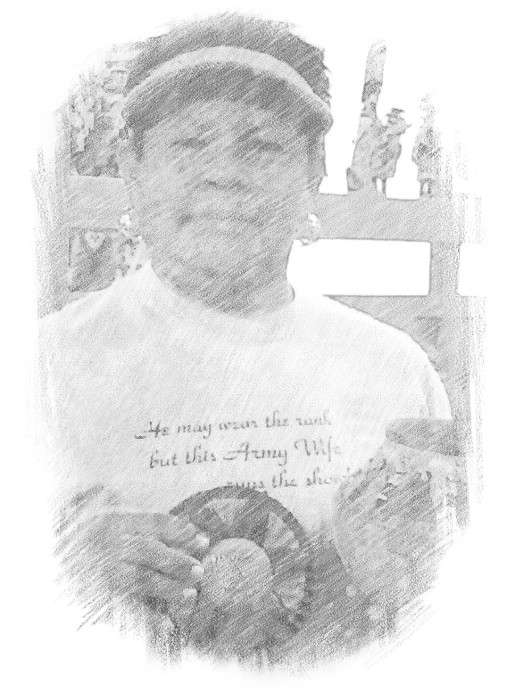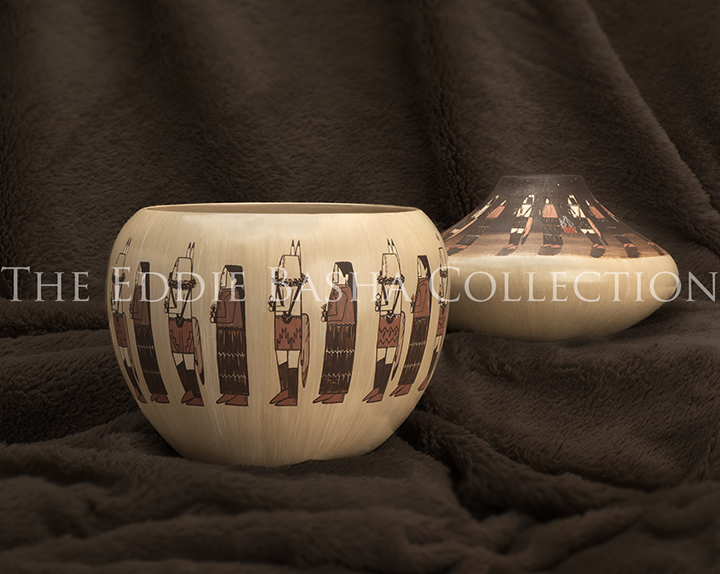
Ida Sahmie
(b. 1960)
Ida Sahmie was born in 1960 near Pine Springs, AZ. She grew up in a traditional Navajo family. She learned to weave from her mother and grandmother. Ida did not think she had the patience to be a serious weaver. In the mid 1980s she married Andrew “Louie” Sahmie who was Hopi. Ida then moved to the Hopi reservation. Her mother-in-law was Priscilla Namingha, a well-known potter and descendant of the famous Hopi potter Nampeyo.
Ida watched Priscilla making pottery and was moved by the beautiful work. Wanting to do something with her hands, Ida was encouraged by her mother-in-law to make some pots. She started out making small pots which she fired along with Priscilla’s work. Her original designs were simple Hopi based patterns. Ida soon realized that she needed to make her own design based on her Navajo heritage.
At this time Bruce McGee owned the Indian Art Gallery at the historic Keams Canyon Trading Post. Ida planned to drive Priscilla there to sell some of her pots – she suggested that Ida bring some of her own. Bruce bought some and asked for more. This was the beginning of Ida’s career as a potter.
Studying Navajo sand painting designs was the inspiration for the images that Ida uses on her pots. As some of these are sacred imaged they must be depicted exactly, others required that Ida have a Night Chant ceremony performed before it would be safe to depict the figures.
Designs are derived from her Navajo heritage, the pots are created using Hopi techniques. She prefers to dig her clay on the Navajo reservation. She uses a mix of natural white and yellow clays resulting in a peach colored body which shows off her designs the best. She mixes a little of the white clay with wild spinach to create a softer black slip used in her images.
The posts are fired outside in the traditional way with ash and sand then mounded over with sheep manure for intense heat. The firing process can take all day and can only be accomplished when the weather is just right.
Ida won 2nd Place and Best of Class for her pottery at the 2010 Navajo Nation Fair. The combination of Hopi techniques and Navajo designs makes her pottery truly unique.
Source: Wheelwright Museum of the American Indian
